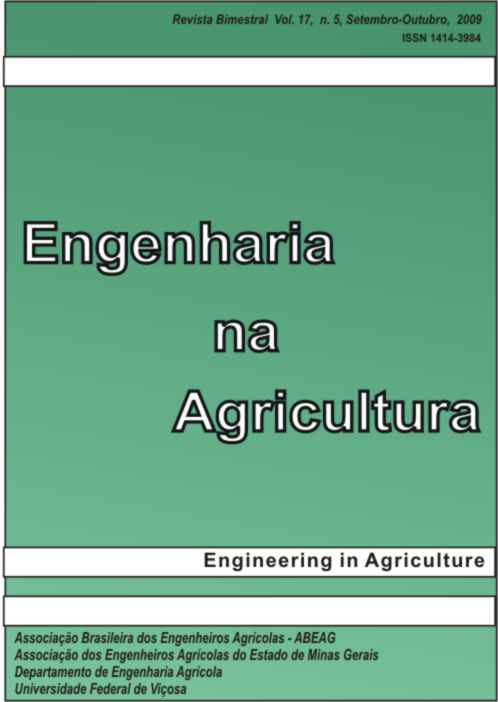PHYSICAL ATTRIBUTES OF SOIL AND ORGANIC CARBON CONTENT IN NO-TILLAGE AND MINIMUM TILLAGE SYSTEMS
DOI:
https://doi.org/10.13083/reveng.v17i5.163Keywords:
Recursos Hídricos, Irrigação, DrenagemAbstract
Conservationist management systems of soil aim at creating propitious conditions to develop crops, allowing an efficient control of erosion and a correct maintenance of soil and water, due to erosive effects minimization. On the other hand, there are some changes on soil structure which show the importance of comparative studies that determine a better management in order to improve productivity and economy of natural and financial recourses. The physical properties on no-tillage (NT) and minimum tillage (MT) management systems were analyzed in an experimental area in Foz do Iguaçu, Western of Paraná, whose production has been carried out during five years under NT system. It was an Alfisol soil. Samples were collected before wheat seeding and after its crop to registered particles densities, soil density, total porosity, textural density and organic carbon content from soil on the following depths: 0.00-5; 0.05-0.10; 0.10-0.15 and 0.15-0.20m. Textural density supported the answers for determining values concerning the saturation limit status (only water, without air) and water and air retention limit, related to friability range (adhesion x cohesion) and a better stability of aggregated to each analyzed depth. The NT system showed greater organic carbon content and the least result of total porosity at 0.0-0.05m of depth. The particles density results increased with depth and total porosity, while MT system showed greater answers of porosity on upper layers, even though it contributed on reducing soil porosity from 0.10-0.15 and 0.15-0.20m layers of depths.Downloads
Downloads
How to Cite
Issue
Section
License
Authors who publish with this journal agree to the following terms:
The author(s) authorize(s) the publication of the text in the journal;
The author(s) ensure(s) that the contribution is original and unpublished and that it is not in the process of evaluation by another journal;
The journal is not responsible for the views, ideas and concepts presented in articles, and these are the sole responsibility of the author(s);
The publishers reserve the right to make textual adjustments and adapt texts to meet with publication standards.
From submission, the author is fully conceding the paper's patrimonial rights to the publication, but retaining the owner of its moral rights (authorship and paper's identification) according to Creative Commons Attribution-Noncommercial.








 Licensed by
Licensed by 